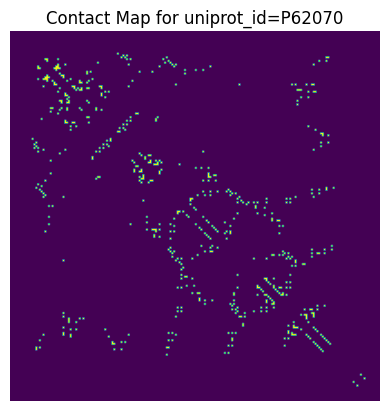PyCoM: A Protein Coevolution Database
PyCoM provides researchers and bioinformaticians with a database of 457,622 annotated proteins and Coevolution Matrices alongside an intuitive Python API, a comprehensive library with tools for analysis, and REST API. sourced from UniProtKB/Swiss-Prot and processed with HH-suite3 and CCMpred. PyCoM simplifies the complex task of protein coevolution analysis. Additionally we host the PyCoM Alignment Repository, containing pre-computed for most proteins in SwissProt.
Why PyCoM?
Ease of Use: Rapidly query, extract, and visualize protein annotation and coevolution data!
Comprehensive Tutorials: Quickly get started with detailed tutorials to maximise your research impact.
Enables Large Scale Analysis of coevolution data taking 35 CPU-core years and 1 GPU year to compute
Installation Made Easy:
Begin exploring immediately:
pip3 install git+https://github.com/scdantu/pycom
Example Usage:
Effortlessly query proteins linked to specific conditions, visualize coevolution matrices, and perform sophisticated analyses:
from pycom import PyCom, CoMAnalysis
import matplotlib.pyplot as plt
pyc = PyCom(remote=True)
prots = pyc.find(
min_length=200, max_length=210,
disease='cancer', has_substrate=True,
matrix=True, page=1
)
CoMAnalysis().add_contact_predictions(prots)
plt.axis('off')
plt.title(f'Contact Map for uniprot_id={prots.uniprot_id[0]}')
plt.imshow(prots.contact_matrix[0])
plt.show()
print(prots.iloc[0])
Example Output:

|
uniprot_id P62070
neff 12.754
sequence_length 204
sequence MAAAGWRDGSGQEK...
organism_id 9606
helix_frac 0.29902
turn_frac 0.019608
strand_frac 0.220588
has_ptm 1
has_pdb 1
has_substrate 1
matrix [[0.0, 0.268, ...
contact_matrix [[0.0, 0.0, ...
Name: 0, dtype: object
|
(If the image is not displaying, click here.)
Key Features
PyCoMdb: Extensive database of coevolution matrices, accessible at PyCoMdb Downloads.
PyCoM Python Library:
Querying: Quickly find proteins by specific criteria.
Coevolution Matrix Analysis: Visualize and analyze detailed coevolution data (Analysis Tutorial).
PDB & AlphaFold Analysis: Integrated tools for protein structure parsing and analysis (PDB Tutorial).
RESTful API:
Direct and flexible access through our RESTful API (API Guide).
Available at: https://pycom.brunel.ac.uk/api/
Alignment File Repository:
Over 370,000 protein alignment files available at Alignment Repository.
Comprehensive guide: Alignment Analysis Tutorial.
Alignment generation parameters via HH-suite3 are detailed in Kamisetty et al. 2013.
How to Cite PyCoM
Please cite the following if PyCoM supports your research:
Harvard-style citation:
Glass, P.E., Alibai, S., Pandini, A. & Dantu, S.C., 2024. PyCoM: a Python library for large-scale analysis of residue–residue coevolution data. Bioinformatics, 40(4), p.btae166. https://doi.org/10.1093/bioinformatics/btae166
BibTeX:
@article{glass2024pycom,
author = {Glass, Philipp E and Alibai, Sabriyeh and Pandini, Alessandro and Dantu, Sarath Chandra},
title = "{PyCoM: a python library for large-scale analysis of residue–residue coevolution data}",
journal = {Bioinformatics},
volume = {40},
number = {4},
pages = {btae166},
year = {2024},
url = {https://doi.org/10.1093/bioinformatics/btae166},
}
Our Team
Philipp E. Glass, API developer
Matthew O’ Neil, Web developer
Hardeep Kaur, Web developer
Sabriyeh Alibai, Literature Review & Testing
Lorraine Ayad, Sequence analysis expert
Isabel Sassoon, Statistician
Faruck Morcos, Coevolution expert and advisor
Alessandro Pandini, Scientific Advisor
Sarath Chandra Dantu, Corresponding Author, PI